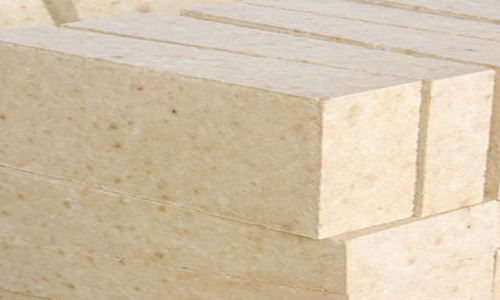Magnesia Dolomite Brick in AOD Refining Furnace
The application of magnesia dolomite in AOD refining furnace, AOD method is adopted in more than 75% of stainless steel production method. The refractories for AOD furnaces are mainly magnesia dolomite bricks and magnesia chrome bricks. Magnesia chrome bricks are used in the United States, dolomite bricks are burned in Germany, dolomite bricks are not used in Italy, magnesia dolomite bricks are used in Japan, and pure dolomite refractory bricks are used in Europe. The effect of magnesia dolomite bricks is better than that of magnesia chrome bricks. From the development trend, magnesia calcium bricks will replace magnesia chrome bricks. Researches such as Dashiquan of Japan found that when smelting stainless steel, the effect of using non-calcined magnesia calcium carbon bricks is better.
VOD furnaces produce highly erosive slag at high temperatures and have strong eddy currents. In order to reduce the refractory lining, carbon based thermodynamically stable wear-resistant materials should be used. The dolomite or dolomite magnesia brick should be preferred here. The test results of the Japan Kurosaki Kiln Research Institute show that magnesia dolomite bricks (MgO78.7%, CaO19.5%) are better than magnesia chrome bricks in terms of corrosion resistance and economic benefits.
VAD refined ladle is mainly used for refining carbon steel and alloy steel with high purity. The slag line is generally made of magnesia chrome brick. It is now developed as dolomite, magnesia dolomite and high purity dolomite carbon brick. The service life is 30~40. Times, while magnesia chrome bricks are less than 15 times. The erosion rate of light-burning vacuum oil-impregnated magnesia-calcium carbon brick slag line of 60t VAD furnace in Daye Steel Plant is only 33.1%,42.7% of high strength magnesia carbon brick.
100tLF-VD refined ladle in a steel factory in southern China, used for refining cord steel. The non-streamlined part of the wall is made of 33%-35% non-calcined calcium-calcium brick with a domestic CaO content. The service life is more than 80 times. Up to 94 times. The average service life of imported bricks of the same type in foreign countries is 81 times, and the maximum service life is 84 times. The 225t ladle wall of a steel company in northern China uses non calcined magnesia calcium carbon bricks, with an average service life of 116.8 times, which is 37.5 times higher than that of alumina magnesium carbon bricks, and reduces the [O] content and the amount of inclusions in the molten steel. It reduces the particle size of inclusions and is beneficial to improve the quality of molten steel. A steel pipe company used non-calcined magnesia-calcium carbon bricks in the 150tLF-VD refined ladle slag line and achieved satisfactory results. The working lining of the 120tVOD furnace of Huadong Vegetable Stainless Steel Co., Ltd. uses non-calcined magnesia-calcium bricks and non-calcined magnesium-calcium carbon (carbon content of 3% to 5%) bricks, and the effect is good. Another steel company used non-calcined magnesia-calcium carbon bricks in the slag line of the 90t ASEA-SKF refined ladle, and achieved good results. A stainless steel project newly put into operation by a steel company in western China, the furnace cap of the 120t AOD furnace and the wall of the refined ladle use non-calcined magnesia-calcium bricks, some of which use domestically produced bricks, and have achieved good use effects, and are expected to replace imported bricks. A steel mill in Shandong used 90tLF ladle to refine the cord steel. The lining material was also used to test non-calcined magnesia bricks and non-calcined magnesia carbon bricks.
Magnesia calcium refractories have become the ideal lining material for refining furnaces, and the application of magnesia calcium refractories in refining furnaces has appeared, especially in European countries. At present, the use of magnesia calcium refractories in refined ladle is mainly to produce stainless steel, and almost all AOD furnaces use dolomite bricks instead of magnesia chrome bricks. The United States and Japan are also developing in this regard. China's development in the past decade or so is also very fast, among which manufacturers of a certain scale have a refractory material company in Yingkou and a refractory material company in Taiyuan. The CaO content of the calcined magnesia-calcium refractory products produced by a refractory company in Yingkou is 15%-40%. The series products are used on the 90tAOD refining furnace in Pohang, Korea, and the service life is maintained above 230 furnaces; in the 40tAOD furnace of Taiyuan Iron and Steel Co., Ltd. Used in 2000, the average life expectancy was 80 times in 2000, the highest was 92 times; in 2002, it reached more than 100 times, which is a good level of domestic brick AOD furnace age. Taigang believes that this product is used in AOD refining furnaces to resist erosion and flaking than pre-reacted magnesia chrome bricks. At present, the AOD refining furnace of a factory in Shanghai also uses this product, and its service life has exceeded 50 furnaces. In Japan, the Nisshin Zhounan 80tVOD furnace uses the magnesium-calcium products of a refractory company in Yingkou, with an average life of 40 times. VOD furnaces should use dolomite or magnesium dolomite bricks that contain no carbon or contain a small amount of carbon. In the long run, magnesium-based refractories have a tendency to replace magnesia-chrome refractories in stainless steel refining systems.


